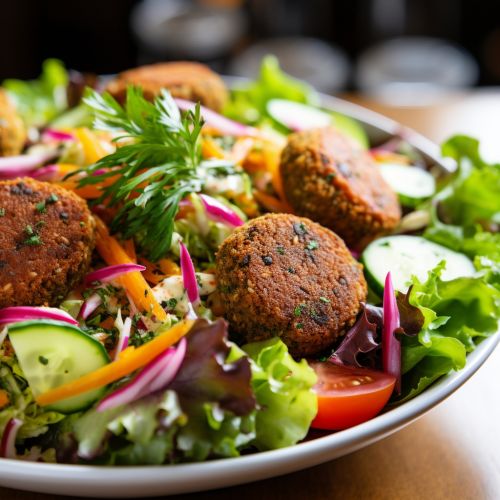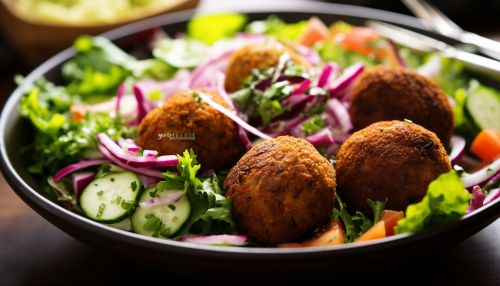Falafel
Introduction
Falafel is a traditional Middle Eastern food, commonly served in a pita, which acts as a pocket, or wrapped in a flatbread known as taboon. The falafel balls are topped with salads, pickled vegetables, hot sauce, and drizzled with tahini-based sauces. Falafel balls may also be eaten alone as a snack or served as part of a meze (appetizers).


History
While falafel is often considered a national dish of Israel, its origins are somewhat disputed. Some theories suggest that this dish originated in Egypt, possibly consumed by Copts as a replacement for meat during Lent. However, its exact origins remain a mystery.
Ingredients and Preparation
Falafel is a deep-fried ball or patty-shaped fritter made from ground chickpeas, fava beans, or both. The use of chickpeas is predominant in most Middle Eastern countries, such as Israel and Syria. The dish is usually made with chickpeas in Syria, Lebanon, and Israel. On the other hand, fava beans are the primary ingredient in Egypt and other North African countries.
The chickpeas are soaked overnight, then ground together with various ingredients such as parsley, scallions, and garlic. Spices such as cumin and coriander are often added for additional flavor. Once the mixture is well combined, it is shaped into balls or patties and deep-fried until golden brown.
Nutritional Value
Falafel is high in protein, complex carbohydrates, and fiber. Its key ingredients, chickpeas and fava beans, are both rich in these nutrients, making falafel an excellent choice for those on a vegetarian or vegan diet. Moreover, as the dish is typically served with fresh salads and pickled vegetables, it also provides a good source of vitamins and minerals.
Cultural Significance
Falafel has become popular among vegetarians and vegans worldwide, as it is an excellent source of protein. The popularity of falafel has spread to the West, where it is often served as a "street food" and is now a common and popular fast food in many countries, including the United States.
Variations
There are many variations of falafel throughout the Middle East, each with its unique twist. In Lebanon, sesame seeds are often added to the falafel mixture before it is fried. In Yemen, the falafel balls are smaller and served with hot sauce. In Sudan, falafel is often made with a mixture of chickpeas and fava beans, spiced with cumin and coriander, similar to the version found in Egypt.
